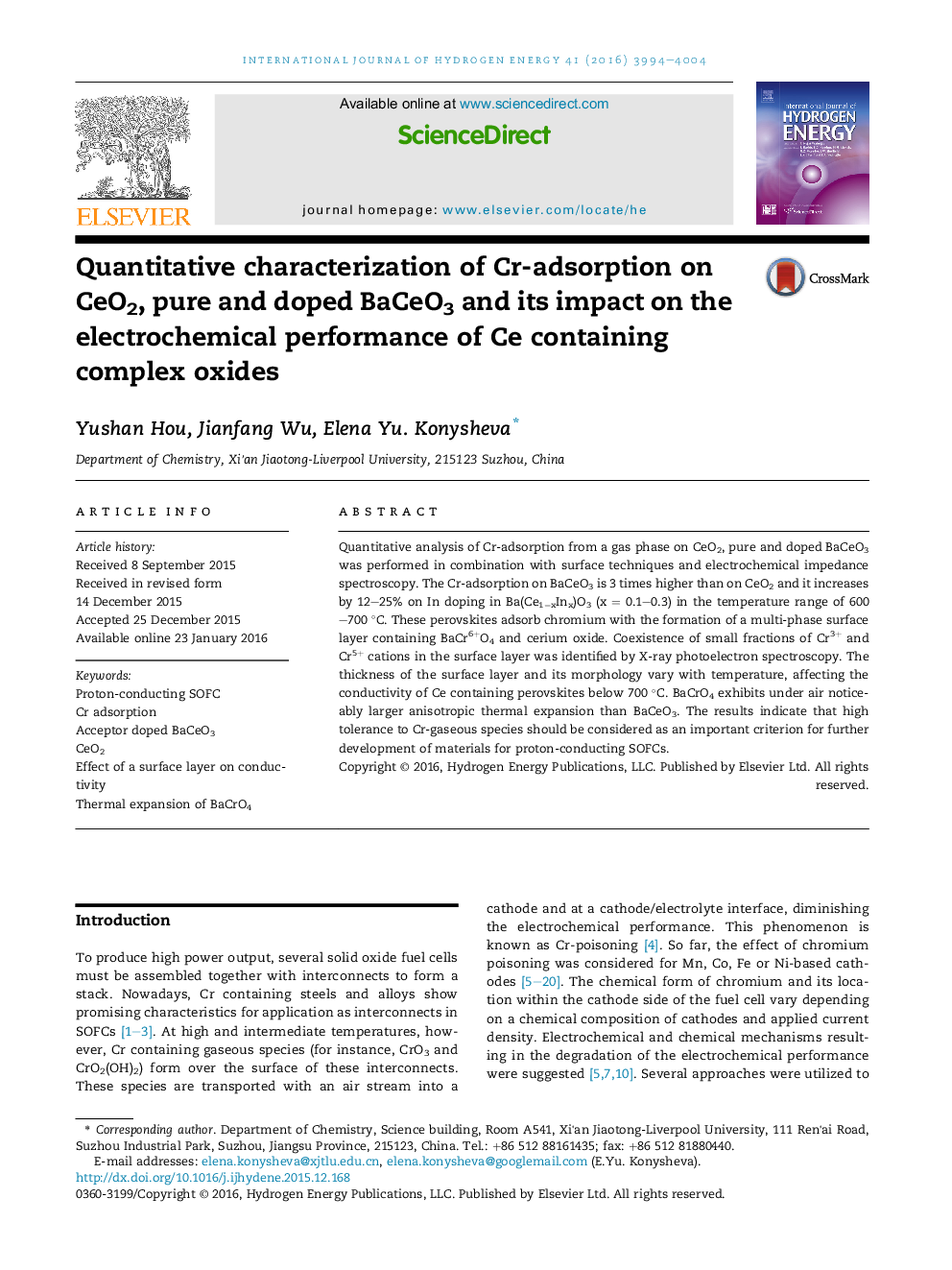| کد مقاله | کد نشریه | سال انتشار | مقاله انگلیسی | نسخه تمام متن |
|---|---|---|---|---|
| 1277929 | 1497419 | 2016 | 11 صفحه PDF | دانلود رایگان |

• Quantitatively Cr-adsorption on CeO2 is about 3 times lower compare with BaCeO3.
• Cr-adsorption increases by 12% on In doping in Ba(Ce1−xInx)O3 perovskites at 600 °C.
• The formed multi-phase surface layer consists of BaCrO4 and pure/modified CeO2.
• The formation of a surface layer reduces conductivity of Ba(Ce1−xInx)O3 below 700 °C.
• BaCrO4 in air exhibits noticeably larger anisotropic thermal expansion than BaCeO3.
Quantitative analysis of Cr-adsorption from a gas phase on CeO2, pure and doped BaCeO3 was performed in combination with surface techniques and electrochemical impedance spectroscopy. The Cr-adsorption on BaCeO3 is 3 times higher than on CeO2 and it increases by 12–25% on In doping in Ba(Ce1−xInx)O3 (x = 0.1–0.3) in the temperature range of 600–700 °C. These perovskites adsorb chromium with the formation of a multi-phase surface layer containing BaCr6+O4 and cerium oxide. Coexistence of small fractions of Cr3+ and Cr5+ cations in the surface layer was identified by X-ray photoelectron spectroscopy. The thickness of the surface layer and its morphology vary with temperature, affecting the conductivity of Ce containing perovskites below 700 °C. BaCrO4 exhibits under air noticeably larger anisotropic thermal expansion than BaCeO3. The results indicate that high tolerance to Cr-gaseous species should be considered as an important criterion for further development of materials for proton-conducting SOFCs.
Figure optionsDownload as PowerPoint slide
Journal: International Journal of Hydrogen Energy - Volume 41, Issue 6, 19 February 2016, Pages 3994–4004